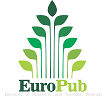Implicancia del cuidado de la casa común en el desarrollo filogenético de la viruela del mono
Resumen
La viruela del mono es una zoonosis reemergente producida por el monkeypox virus (MPXV), que pertenece a la familia poxviridae, al género orthopoxvirus. Se identificó por primera vez en el año 1958, desde entonces se han dado brotes en diferentes países del continente africano.
Sin embargo, se constata que el patógeno ha evolucionado, por la presencia de polimorfismo genómico, pérdida de genes, etc. Hasta llegar al clado IIb, que ha causado el brote del año 2022. Entre los factores que han influido en su filogenética se han identificado: barreras biogeográficas, variaciones climáticas drásticas y acciones humanas. Estas últimas dependen de la relación de la persona con su entorno natural, entre ellas está: la destrucción de áreas forestales, consumo de animales silvestres y el tráfico de especies. Estas actividades, además de vulnerar los derechos de la persona como el de un ambiente sano y a la salud, dan las condiciones necesarias para que los virus de diferentes especies puedan transmitirse a la persona y generar zoonosis que puedan poner en riesgo la salud pública. Por ese motivo es fundamental el cuidado de la casa común para evitar la propagación de enfermedades zoonoticas como la viruela del mono.
Descargas
Citas
Alakunle, E., Moens, U., Nchinda, G., & Ifeanyi, M. (2020). Monkeypox Virus in Nigeria: Infection Biology, Epidemiology, and Evolution. Viruses, 12(11), 1-29. https://doi.org/10.3390/v12111257
Angelo, K. M., Petersen, B. W., Hamer, D. H., Schwartz, E., & Bunette, G. (2019). Monkeypox transmission among international travellers-serious monkey business? Journal of travel medicine, 26(5), 1-2. https://doi.org/10.1093/jtm/taz002
Auwal I., Kabuga, A., & El Zowalaty, M. (2018). A review of the monkeypox virus and a recent outbreak of skin rash disease in Nigeria. Journal of medical virology, 91(4), 533-540. https://doi.org/10.1002/jmv.25348
Bahar, M. W., Graham, S. C., Chen, R. A., Cooray, S., Smith, G. L., Stuart, D. I., & Grimes, J. M. (2011). How vaccinia virus has evolved to subvert the host immune response. Journal of structural biology, 175(2), 127–134. https://doi.org/10.1016/j.jsb.2011.03.010
Beer, E.M, & Rao, V. B. (2019). A systematic review of the epidemiology of human monkeypox outbreaks and implications for outbreak strategy. PloS Neglected Tropical Diseases, 13 (10), 2 - 20. https://doi.org/10.1371/journal.pntd.0007791
Centre for Disease Control and Prevention. (2019). About Monkeypox. Center of Disease Control and Prevention. https://bit.ly/3PSfepc
Cuestas, M. L., & Minassian, M. L. (2020). Virus emergentes y reemergentes: un nuevo reto para la salud mundial del milenio. Revista Argentina de microbiologia, 52(1), 1–3. https://doi.org/10.1016/j.ram.2020.02.001
Damon I. K. (2011). Status of human monkeypox: clinical disease, epidemiology and research. Vaccine, 29 Suppl 4, D54–D59. https://doi.org/10.1016/j.vaccine.2011.04.014
Damon, I., Roth, C., & Chowdhary, V. (2006). Discovery of monkey pox in Sudan. The new England journal of medicine, 355(9), 962-963. https://doi.org/10.1056/NEJMc060792
eBioMedicine. (2022). Monkeypox virus outbreak: can evolution guide us to new treatments or vaccines? EBioMedicine, 82,1-2. https://doi.org/10.1016/j.ebiom.2022.104221
Faye, O., Pratt, C. B., Faye, M., Fall, G., Chitty, J. A., Diagne, M. M., Wiley, M. R., Yinka-Ogunleye, A. F., Aruna, S., Etebu, E. N., Aworabhi, N., Ogoina, D., Numbere, W., Mba, N., Palacios, G., Sall, A. A., & Ihekweazu, C. (2018). Genomic characterisation of human monkeypox virus in Nigeria.The Lancet. Infectious diseases, 18(3), 246. https://doi.org/10.1016/S1473-3099(18)30043-4
Francisco, P. (2015). Laudato SI' [Carta encíclica]. https://bit.ly/2FpS87S
Global Health Team. (9 de septiembre del 2022). Monkeypox 2022 global epidemiology; Report 2022-09-06. Global Health a Data Science Initiative. https://bit.ly/3WqSr6m
Gómez, L.M. (2020). Desafío ambiental: enseñanzas a partir de la COVID-19. Medisan, 24(4), 728-743. https://bit.ly/3WIRk1HGonder, M., Disotell, T.R., & Oates, J.F. (2006). New Genetic Evidence on the Evolution of Chimpanzee Populations and Implications for Taxonomy. International Journal of Primatology, 27, 1103–1127. https://doi.org/10.1007/s10764-006-9063-y
Gong, Q., Wang, C., chiua, X., & chiu, S. (2022). Monkeypox virus: a re-emergent threat to humans. Virologica Sinica, 37(4), 477-482. https://doi.org/10.1016/j.virs.2022.07.006
Haffer J. (1969). Speciation in amazonian forest birds. Science (New York, N.Y.), 165(3889), 131–137. https://doi.org/10.1126/science.165.3889.131
Haffer, J. (1997). Alternative models of vertebrate speciation in Amazonia: an overview. Biodiversity and Conservation, 6, 451–476. https://doi.org/10.1023/A:1018320925954
Hendrickson, R. C., Wang, C., Hatcher, E. L., & Lefkowitz, E. J. (2010). Orthopoxvirus genome evolution: the role of gene loss. Viruses, 2(9), 1933–1967. https://doi.org/10.3390/v2091933
International Committee on Taxonomy of Viruses. (2009). Family: Poxviridae ICTV 9th Report (2011). International Committee on Taxonomy of Viruses. https://bit.ly/3WHkqi7
Isidro, J., Borges, V., Pinto, M. et al. (2022). Phylogenomic characterization and signs of microevolution in the 2022 multi-country outbreak of monkeypox virus. Nature Medicine, 28, 1569–1572. https://doi.org/10.1038/s41591-022-01907-y
Jezek, Z., Grab, B., Paluku, K. M., & Szczeniowski, M. V. (1988). Human monkeypox: disease pattern, incidence and attack rates in a rural area of northern Zaire. Tropical and geographical medicine, 40(2), 73–83.
Kugelman, J.R., Johnston, S.C., Mulembakani, P.M., Kisalu, N., Lee, M.S., Koroleva, G., McCarthy, S.E., Wolfe, N.D., Fair, J.N., Schneider, B.S., Wright, L.L., Huggins, J., Whitehouse, C.A., Wemakoy, E.O., Muyembe-Tamfum,, J.J., Hensley, L.E., Palacios, G.F., & Rimoin, A.W. (2014). Genomic variability of monkeypox virus among humans, Democratic Republic of the Congo. Emerging infectious diseases, 20(2), 232-239. https://doi.org/10.3201/eid2002.130118
Kulkarni, D. D., Tosh, C., Venkatesh, G., & Senthil Kumar, D. (2013). Nipah virus infection: current scenario. Indian journal of virology: an official organ of Indian Virological Society, 24(3), 398–408. https://doi.org/10.1007/s13337-013-0171-y
Kumar, N., Acharya, A., Gendelman, H., & Byrareddy, S. (2022). The 2022 outbreak and the pathobiology of the monkeypox virus. Journal of Autoimmunity, 131, 1-8. https://doi.org/10.1016/j.jaut.2022.102855
Ladnyj, I. D., Ziegler, P., & Kima, E. (1972). A human infection caused by monkeypox virus in Basankusu Territory, Democratic Republic of the Congo. National library of medicine, 46(5), 593-597.
Lash, A., Davidson, W.B., Smith, S.K., Levine, R.S., Regnery, R.L., Sammons, S.A., Frace, F.A., Mutasim, E.M., Karsani, M., Muntasir, M.O., Babiker, A.A., Opoka, L., Chowdhary, V., & Damon, I.K. (2013). Phylogenetic and ecologic perspectives of a monkeypox outbreak, southern Sudan, 2005. Emerging infectious diseases, 19(2). https://doi.org/10.3201/eid1902.121220
Luna, N., Ramírez, A. L., Muñoz, M., Ballesteros, N., Patiño, L. H., Castañeda, S. A., Bonilla-Aldana, D. K., Paniz-Mondolfi, A., & Ramírez, J. D. (2022). Phylogenomic analysis of the monkeypox virus (MPXV) 2022 outbreak: Emergence of a novel viral lineage? Travel medicine and infectious disease, 49, 2-6. https://doi.org/10.1016/j.tmaid.2022.102402
Nakazawa, Y., Mauldin, M. R., Emerson, G. L., Reynolds, M. G., Lash, R. R., Gao, J., Zhao, H., Li, Y., Muyembe, J. J., Kingebeni, P. M., Wemakoy, O., Malekani, J., Karem, K. L., Damon, I. K., & Carroll, D. S. (2015). A phylogeographic investigation of African monkeypox. Viruses, 7(4), 2168–2184. https://doi.org/10.3390/v7042168
Narendra, K., Arpan, A., Howard, E., Gendelman, Siddappa, N., & Byrareddy. (2022). The 2022 outbreak and the pathobiology of the monkeypox virus. Journal of Autoinmunity, 131, 1-8. https://doi.org/10.1016/j.jaut.2022.102855
Nigeria Centre for Disease Control and Prevention (2018). An update of monkeypox outbreak in Nigeria. Nigeria CDC. https://bit.ly/3YShJfi
Nigeria Centre for Disease Control and Prevention. (2017). Monkeypox outbreak response — interim national guidelines — October 2017. Federal Ministry of Health - Nigeria Centre for Disease Control. https://bit.ly/3I3El6L
Ortiz, G. (2020). Pandemias, zoonosis y comercio de animales silvestres. Revista de Bioética y Derecho, 50, 19-35. https://bit.ly/3hQrt9h
Peter, O.J., Kumar, S., Kumari, N. et al. (2022). Transmission dynamics of Monkeypox virus: a mathematical modelling approach. Modeling Earth Systems and Environment. 8, 3423–3434 (2022). https://doi.org/10.1007/s40808-021-01313-2
Petersen, B., Kabamba, J., McCollum, A., Lushima, R., Wemakoy, E., Muyembe, J., Nguete, B., Monroe, B., & Reynolds, M. (2019). Vaccinating against monkeypox in the Democratic Republic of the Congo. Antiviral research, 162, 171-177. https://doi.org/10.1016/j.antiviral.2018.11.004
Petersen, E., Abubakar, I., Ihekweazu, C., Heymann, D., Ntoumi, F., Blumberg, L., Asogun, D., Mukonka, V., Lule, S., Bates, M., Honeyborne, I., Mfinanga, S., Mwaba, P., Dar, O., Vairo, F., Mukhtar, M., Kock, R., McHugh, T., Ippolito, G., & Zumla, A. (2018). Monkeypox — Enhancing public health preparedness for an emerging lethal human zoonotic epidemic threat in the wake of the smallpox post-eradication era. International Journal of Infectious Diseases, 78, 78-84. https://doi.org/10.1016/j.ijid.2018.11.008
Public Health in England. (8 de septiembre de 2018). Monkeypox case in England. GOV.UK https://bit.ly/2MjYyox
Quiner, C. A., Moses, C., Monroe, B. P., Nakazawa, Y., Doty, J. B., Hughes, C. M., McCollum, A. M., Ibata, S., Malekani, J., Okitolonda, E., Carroll, D. S., & Reynolds, M. G. (2017). Presumptive risk factors for monkeypox in rural communities in the Democratic Republic of the Congo. PloS one, 12(2), e0168664. https://doi.org/10.1371/journal.pone.0168664
Radonić, A., Dabrowski, P., Couacy-Hymann, E., Schuenadel, L., Kurth, A., Mätz-Rensing, K., Leendertz, F.H., & Nitsche, A. (2012). Fatal monkeypox in wild-living sooty mangabey, Côte d'Ivoire. Emerging infectious diseases, 20(6), 1009-1011. https://doi.org/10.3201/eid2006.13-1329
Rimoin, A., Kisalu, N., Kebela, B., Mukaba, T., Wright, L., Formenty, P., Wolfe, N., Loshima, R., Tshioko, F., Okitolonda, E., Muyembe, J., Ryder, R., & Meyer, H. (2007). Endemic Human Monkeypox, Democratic Republic of Congo, 2001–2004. Emerging infectious diseases, 13(6), 934–937. https://doi.org/10.3201/eid1306.061540
Rimoin, A., Mulembakan Mulembakani, P., Johnston, S., Lloyd, J., Neville, S., & Timothee, K. (2010). Major increase in human monkeypox incidence 30 years after smallpox vaccination campaigns cease in the Democratic Republic of Congo. The Pediatric Infectious Disease Journal, 107(37), 16262–16267. https://doi.org/10.1073/pnas.1005769107
Schunke, A.C., & Hutterer, R. (2004). The variance of variation: Geographic patters of coat colouration in Anomalurops and Anomalurus (Mammalia, Rodentia, Anomalouridae). Bonner zoologische Beiträge, 53, 169–185.
Shchelkunov, S. N., Totmenin, A. V., Babkin, I. V., Safronov, P. F., Ryazankina, O. I., Petrov, N. A., Gutorov, V. V., Uvarova, E. A., Mikheev, M. V., Sisler, J. R., Esposito, J. J., Jahrling, P. B., Moss, B., & Sandakhchiev, L. S. (2001). Human monkeypox and smallpox viruses: genomic comparison. FEBS letter, 506(1), 66-70. https://doi.org/10.1016/s0014-5793(01)03144-1
Silva, N. I. O., de Oliveira, J. S., Kroon, E. G., Trindade, G. S., & Drumond, B. P. (2020). Here, There, and Everywhere: The Wide Host Range and Geographic Distribution of Zoonotic Orthopoxviruses. Viruses, 13(1), 43. https://doi.org/10.3390/v13010043
Sklenovska, N., & Van Ranst, M. (2018). Emergence of Monkeypox as the Most Important Orthopoxvirus Infection in Humans. Frontiers in Public Health, 6, 1-12. https://doi.org/10.3389/fpubh.2018.00241
Tatay, J., & Muñoz, J., (2021). Degradación del medio ambiente y pandemias, perspectivas para el diálogo entre la teología y la biología de la conservación. Revista de teología y pastoral de la caridad. 13 (177). 8-35. https://bit.ly/3GkeZ3l
Von Magnus, P., Andersen, E.K., K.B, & Birch-Andersen, A. (1959). Pox-like Disease in Cynomolgus Monkeys. Acta Pathologica Microbiologica Scandinavica, 46 (2), 156-176. https://doi.org/10.1111/j.1699-0463.1959.tb00328.x
Wang, L., Shang, J., Weng, S., Aliyari, S. R., Ji, C., Cheng, G., & Wu, A. (2022). Genomic annotation and molecular evolution of monkeypox virus outbreak in 2022. Journal of Medical Virology, 95, 1-7. https://doi.org/10.1002/jmv.28036
Weaver, J.R., & Isaacs, S.N. (2008). Monkeypox virus and insights into its immunomodulatory proteins. Inmunological Reviews, 225, 96-113. https://doi.org/10.1111/j.1600-065X.2008.00691.x
World Health Organization. (1999). Technical Advisory Group on Human Monkeypox (1999). World Health Organization. https://bit.ly/3vf7nIW
World Health Organization. (2022). Monkeypox: experts give virus variants new names. World Health Organization. https://bit.ly/3WIr5bJWorld Health Organization. (2018). Monkeypox Key facts. World Health Organization. https://bit.ly/30dlIVu
Los autores conservan los derechos de autor.
Esta obra está bajo una licencia internacional Creative Commons Attribution 4.0.
Los artículos publicados por la revista científica "Apuntes de Bioética" de la Universidad Católica Santo Toribio de Mogrovejo, Chiclayo, Perú están sujetos a una licencia internacional Creative Commons Attribution CC BY 4.0.
























 BIBLIOTECA USAT
BIBLIOTECA USAT